Your cart is currently empty!
Tag: Data Center Facilities Management
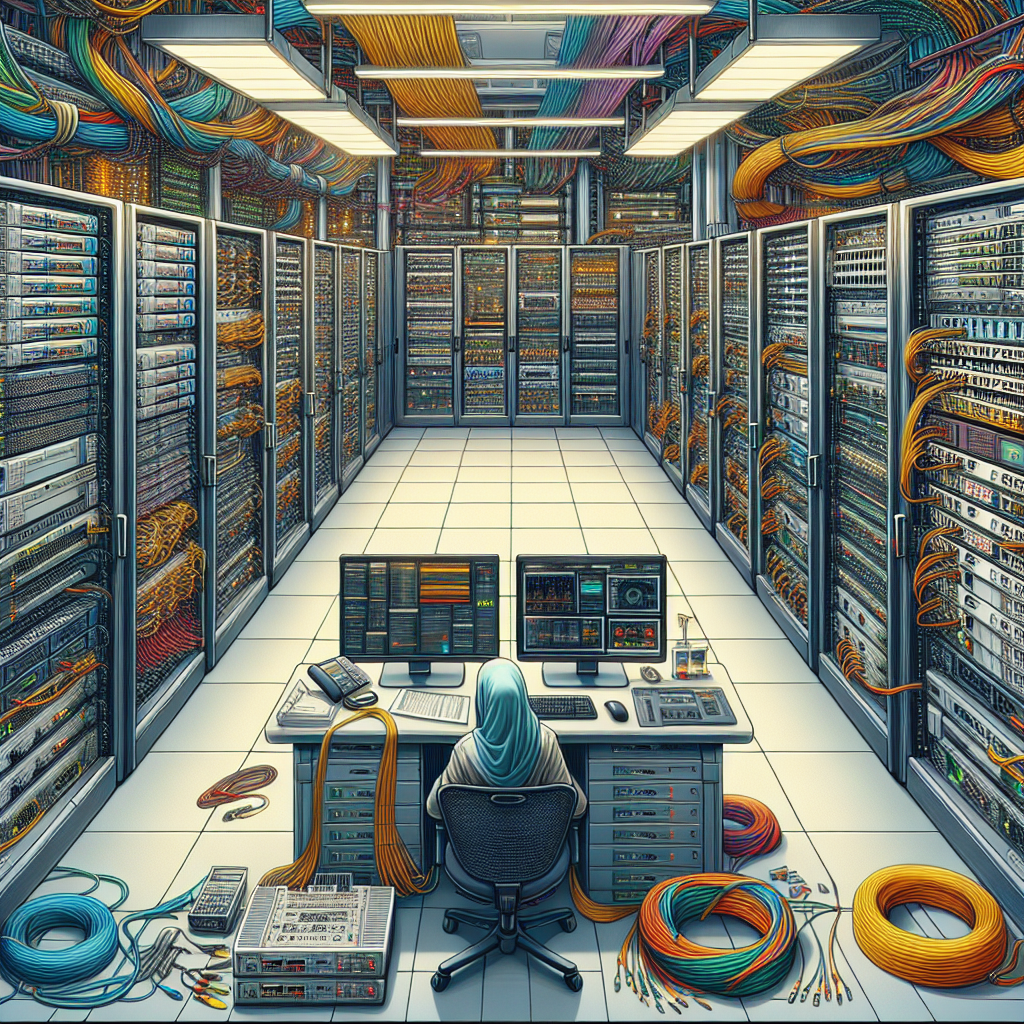
Troubleshooting Data Center Connectivity Problems: Tips and Tricks
In today’s digital age, data centers play a critical role in the operations of businesses and organizations. These facilities house servers, storage systems, networking equipment, and other crucial components that store and process data. As such, any disruption in data center connectivity can have serious consequences, ranging from decreased productivity to financial losses.Troubleshooting data center connectivity problems can be a challenging task, but with the right tips and tricks, you can quickly identify and resolve issues to minimize downtime. Here are some strategies to help you troubleshoot data center connectivity problems effectively:
1. Check Physical Connections: The first step in troubleshooting data center connectivity issues is to check the physical connections of your networking equipment. Ensure that all cables are securely plugged in and that there are no loose connections. Look for any signs of damage or wear on cables and replace them if necessary.
2. Test Network Equipment: Use network testing tools to check the status of your networking equipment, such as switches, routers, and firewalls. Verify that all devices are powered on and functioning correctly. Check for any error messages or alerts on the equipment that could indicate a problem.
3. Monitor Network Traffic: Use network monitoring tools to analyze network traffic and identify any bottlenecks or congestion that may be affecting connectivity. Look for patterns of high traffic or unusual spikes that could indicate an issue with your network infrastructure.
4. Review Configuration Settings: Verify the configuration settings of your networking equipment, such as IP addresses, subnet masks, and default gateways. Ensure that all settings are correct and consistent across devices to prevent connectivity issues.
5. Perform Connectivity Tests: Use tools like ping and traceroute to test connectivity between devices in your data center. Check for packet loss, latency, and connectivity issues that could impact data transmission. Identify any devices or network segments that are experiencing connectivity problems.
6. Update Firmware and Software: Regularly update the firmware and software of your networking equipment to ensure that they are running the latest versions with security patches and bug fixes. Outdated software can lead to connectivity issues and vulnerabilities in your data center.
7. Implement Redundancy: To minimize the impact of connectivity problems, implement redundancy in your data center infrastructure. Use redundant networking equipment, multiple internet connections, and failover mechanisms to ensure continuous connectivity in case of failures.
8. Document Changes: Keep detailed documentation of any changes made to your data center infrastructure, such as network configurations, software updates, and hardware replacements. This information can help you troubleshoot connectivity issues more effectively by identifying potential causes of problems.
By following these tips and tricks, you can troubleshoot data center connectivity problems efficiently and minimize downtime in your organization. Remember to regularly monitor and maintain your data center infrastructure to prevent connectivity issues and ensure smooth operations.

Proactive vs. Reactive Maintenance in Data Centers: Finding the Right Balance
When it comes to maintaining a data center, finding the right balance between proactive and reactive maintenance is crucial. Proactive maintenance involves regularly scheduled inspections, testing, and adjustments to prevent equipment failures, while reactive maintenance involves addressing issues as they arise.Proactive maintenance is often seen as the ideal approach because it can help prevent costly downtime and equipment failures. By regularly monitoring and maintaining equipment, data center operators can identify potential issues before they become major problems. This can help extend the life of equipment, improve efficiency, and reduce the risk of unexpected failures.
On the other hand, reactive maintenance can be necessary in certain situations, such as when an unexpected failure occurs. In these cases, quick action is needed to address the issue and minimize downtime. While reactive maintenance can be effective in resolving immediate problems, it is often more costly and can lead to longer downtime if not handled efficiently.
Finding the right balance between proactive and reactive maintenance in a data center requires careful planning and a thorough understanding of the equipment and systems in place. Data center operators should develop a comprehensive maintenance plan that includes both proactive and reactive strategies to ensure the smooth operation of the facility.
One approach to finding the right balance is to prioritize proactive maintenance for critical equipment and systems that are essential to the operation of the data center. Regularly scheduled inspections, testing, and maintenance can help prevent issues before they occur, reducing the need for reactive maintenance.
Additionally, data center operators should invest in monitoring and diagnostic tools to help identify potential issues early on. By monitoring key performance metrics and collecting data on equipment health, operators can proactively address issues before they become major problems.
Ultimately, the key to finding the right balance between proactive and reactive maintenance in a data center is to prioritize prevention while also being prepared to respond quickly to unexpected issues. By developing a comprehensive maintenance plan and investing in monitoring tools, data center operators can ensure the reliability and efficiency of their facility.
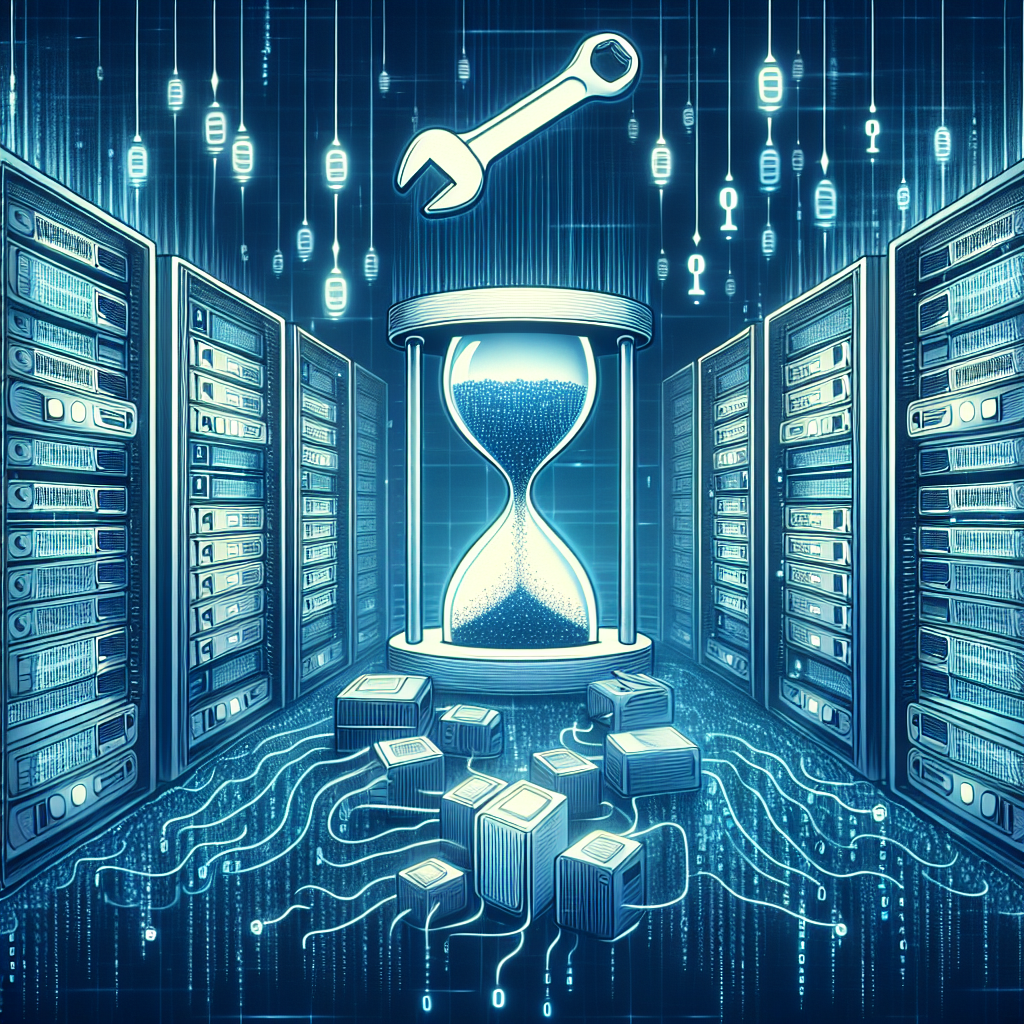
Benefits of Outsourcing Data Center Preventative Maintenance Services
Outsourcing data center preventative maintenance services can bring a multitude of benefits to businesses of all sizes. By entrusting this crucial task to a specialized third-party provider, companies can ensure the smooth and efficient operation of their data centers, while also freeing up their internal IT teams to focus on more strategic initiatives. Here are some of the key advantages of outsourcing data center preventative maintenance services:1. Expertise and Experience: Data center preventative maintenance requires specialized knowledge and skills that may not be readily available within an organization. By outsourcing this task to a company that specializes in data center maintenance, businesses can benefit from the expertise and experience of trained professionals who have a deep understanding of the complexities of data center infrastructure.
2. Cost Savings: Outsourcing data center preventative maintenance can result in significant cost savings for businesses. By partnering with a third-party provider, companies can avoid the need to hire and train additional staff, purchase expensive equipment, and invest in ongoing training and certification programs. Additionally, outsourcing can help businesses avoid costly downtime and repairs by catching potential issues before they escalate.
3. Increased Efficiency: By outsourcing data center preventative maintenance, businesses can ensure that their data center infrastructure is operating at peak efficiency. Regular maintenance tasks such as cleaning, testing, and monitoring can help identify and address issues before they cause disruptions or downtime. This proactive approach can help businesses reduce the risk of costly outages and ensure that their data center is running smoothly at all times.
4. Flexibility and Scalability: Outsourcing data center preventative maintenance services can provide businesses with greater flexibility and scalability. As business needs change and grow, companies can easily adjust their maintenance requirements to align with their evolving needs. This can help businesses stay agile and responsive in a fast-paced and dynamic business environment.
5. Focus on Core Business Activities: By outsourcing data center preventative maintenance, businesses can free up their internal IT teams to focus on more strategic initiatives that drive business growth and innovation. This can help businesses stay competitive in today’s rapidly changing marketplace and ensure that they are able to meet the needs of their customers and stakeholders.
In conclusion, outsourcing data center preventative maintenance services can bring a wide range of benefits to businesses, including expertise and experience, cost savings, increased efficiency, flexibility and scalability, and the ability to focus on core business activities. By entrusting this critical task to a specialized third-party provider, businesses can ensure the smooth and efficient operation of their data centers while also maximizing their competitive advantage in the marketplace.
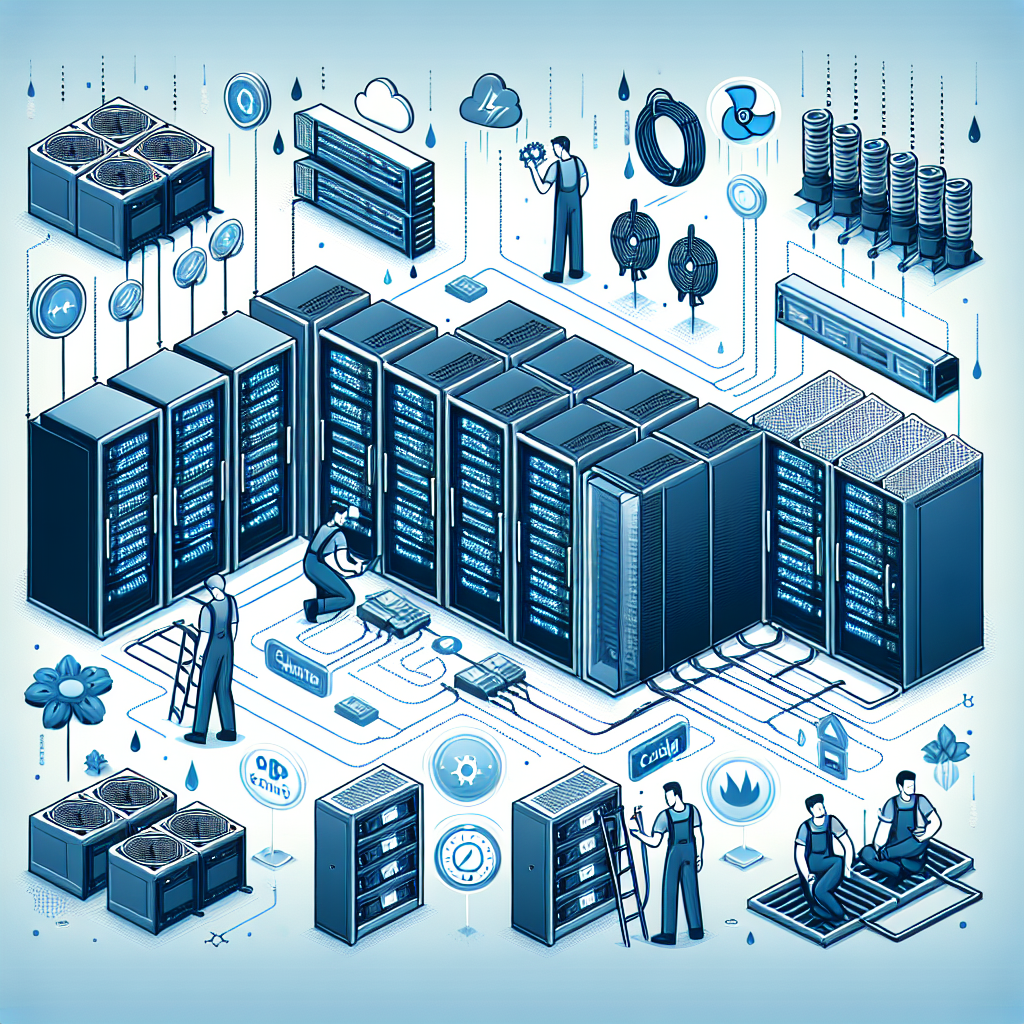
Ensuring Optimal Performance: A Guide to Data Center Maintenance
Data centers are the heart of any organization’s IT infrastructure, housing the servers, storage, and networking equipment that enable businesses to operate efficiently. Ensuring the optimal performance of a data center is crucial to the success of any organization, as downtime can result in lost revenue, damaged reputation, and decreased productivity. Therefore, regular maintenance of a data center is essential to prevent potential issues and keep operations running smoothly.Here is a guide to data center maintenance to help organizations ensure optimal performance:
1. Regular inspections: Conducting regular inspections of the data center is essential to identify any potential issues before they escalate into major problems. Check for signs of overheating, loose cables, dust buildup, and any other potential hazards that could affect the performance of the equipment.
2. Temperature control: Maintaining the proper temperature in the data center is crucial to prevent overheating and ensure the optimal performance of the equipment. Install cooling systems and monitor the temperature regularly to prevent any issues.
3. Cleanliness: Keeping the data center clean is essential to prevent dust and debris from accumulating on the equipment, which can lead to overheating and performance issues. Regularly clean the data center, including the floors, walls, and equipment, to ensure optimal performance.
4. Power management: Ensure that the data center has a reliable power supply and backup systems in place to prevent downtime in case of a power outage. Monitor power usage and distribution to prevent overloading and ensure that the equipment is running efficiently.
5. Security: Protecting the data center from unauthorized access is crucial to prevent data breaches and ensure the security of the organization’s sensitive information. Implement security measures such as access controls, surveillance cameras, and fire detection systems to secure the data center.
6. Documentation: Keep detailed records of all maintenance activities, inspections, and equipment upgrades to track the performance of the data center and identify any trends or patterns that could indicate potential issues. This will help in planning future maintenance activities and ensuring the optimal performance of the data center.
7. Training: Ensure that staff members responsible for maintaining the data center are properly trained and equipped to handle any maintenance tasks. Provide ongoing training and resources to keep them up to date on the latest technologies and best practices in data center maintenance.
By following these guidelines for data center maintenance, organizations can ensure the optimal performance of their data center and prevent potential issues that could disrupt operations. Investing in regular maintenance and upkeep of the data center is essential to protect the organization’s IT infrastructure and ensure uninterrupted service to customers.
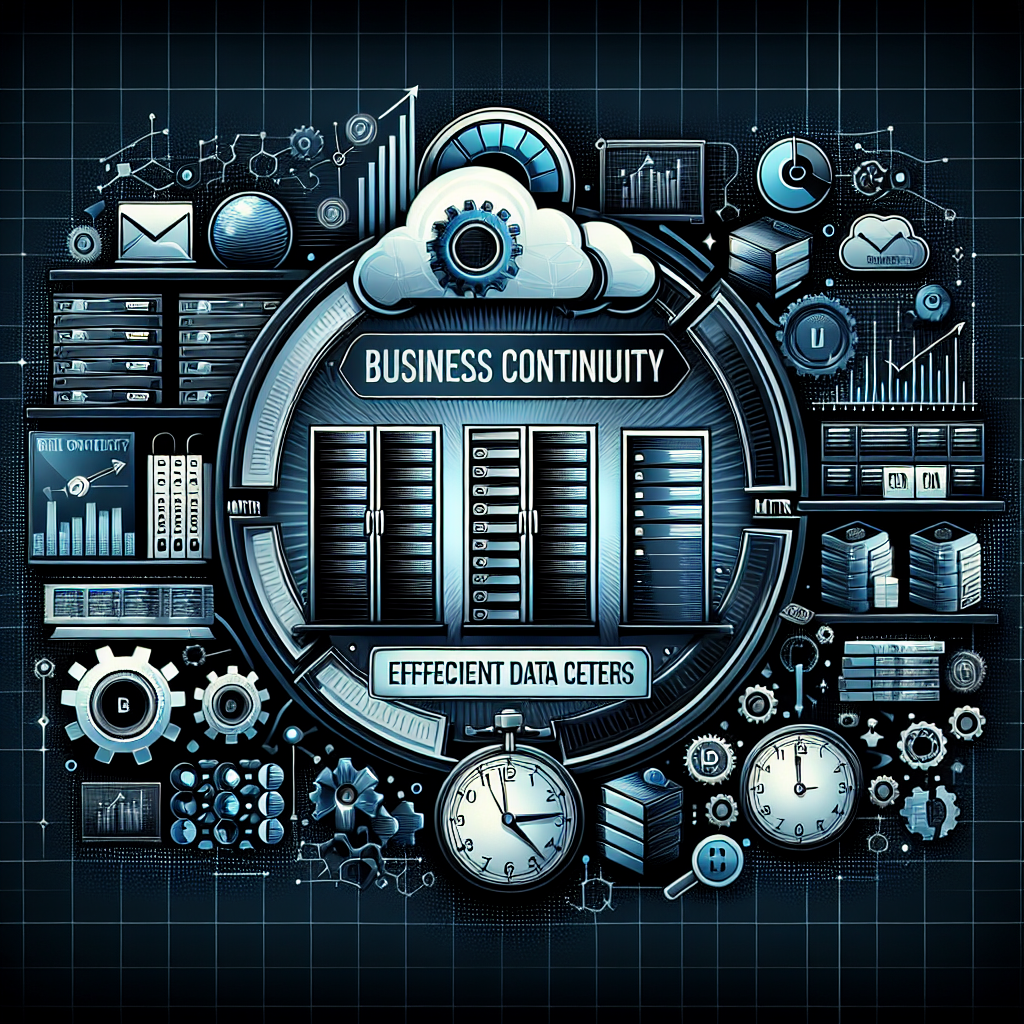
Ensuring Business Continuity: Strategies for Efficient Data Center MTTR
In today’s digital age, data centers are the heart of any business operation. They house critical IT infrastructure and store valuable business data, making them essential for ensuring business continuity. However, data center downtime can have significant repercussions on a company’s operations, leading to financial losses, reputational damage, and even legal implications. To mitigate the impact of downtime, businesses must focus on reducing Mean Time to Repair (MTTR) in their data centers.MTTR is a crucial metric that measures the average time it takes to repair a system or component after a failure occurs. The lower the MTTR, the quicker a data center can be restored to full functionality, minimizing downtime and its associated costs. To achieve efficient data center MTTR, businesses can implement a range of strategies and best practices.
First and foremost, businesses should invest in proactive monitoring and maintenance of their data center infrastructure. By continuously monitoring key performance indicators and conducting regular maintenance checks, potential issues can be identified and resolved before they escalate into full-blown outages. This proactive approach can help prevent downtime and reduce MTTR by addressing problems at an early stage.
Another crucial strategy for efficient data center MTTR is to have a well-defined incident response plan in place. This plan should outline clear roles and responsibilities for all stakeholders involved in the data center operations, including IT staff, facilities personnel, and external vendors. By having a structured and coordinated response to incidents, businesses can expedite the resolution process and minimize the impact of downtime on their operations.
In addition, businesses should consider implementing redundancy and failover mechanisms in their data center infrastructure. By having backup systems and redundant components in place, businesses can ensure continuity of operations even in the event of a hardware failure or other unforeseen circumstances. These redundancy measures can help reduce MTTR by enabling a quick switch to backup systems without disrupting the business operations.
Furthermore, businesses can leverage automation and orchestration tools to streamline the incident resolution process and reduce MTTR. By automating routine tasks and standardizing processes, businesses can accelerate the response time to incidents and minimize human errors. These tools can also provide real-time visibility into the data center environment, allowing IT staff to quickly identify and address issues as they arise.
Overall, ensuring efficient data center MTTR is essential for maintaining business continuity and minimizing the impact of downtime on operations. By implementing proactive monitoring, incident response plans, redundancy measures, and automation tools, businesses can reduce MTTR and enhance the resilience of their data center infrastructure. In today’s competitive business landscape, prioritizing efficient data center MTTR is crucial for staying ahead of the curve and ensuring uninterrupted operations.
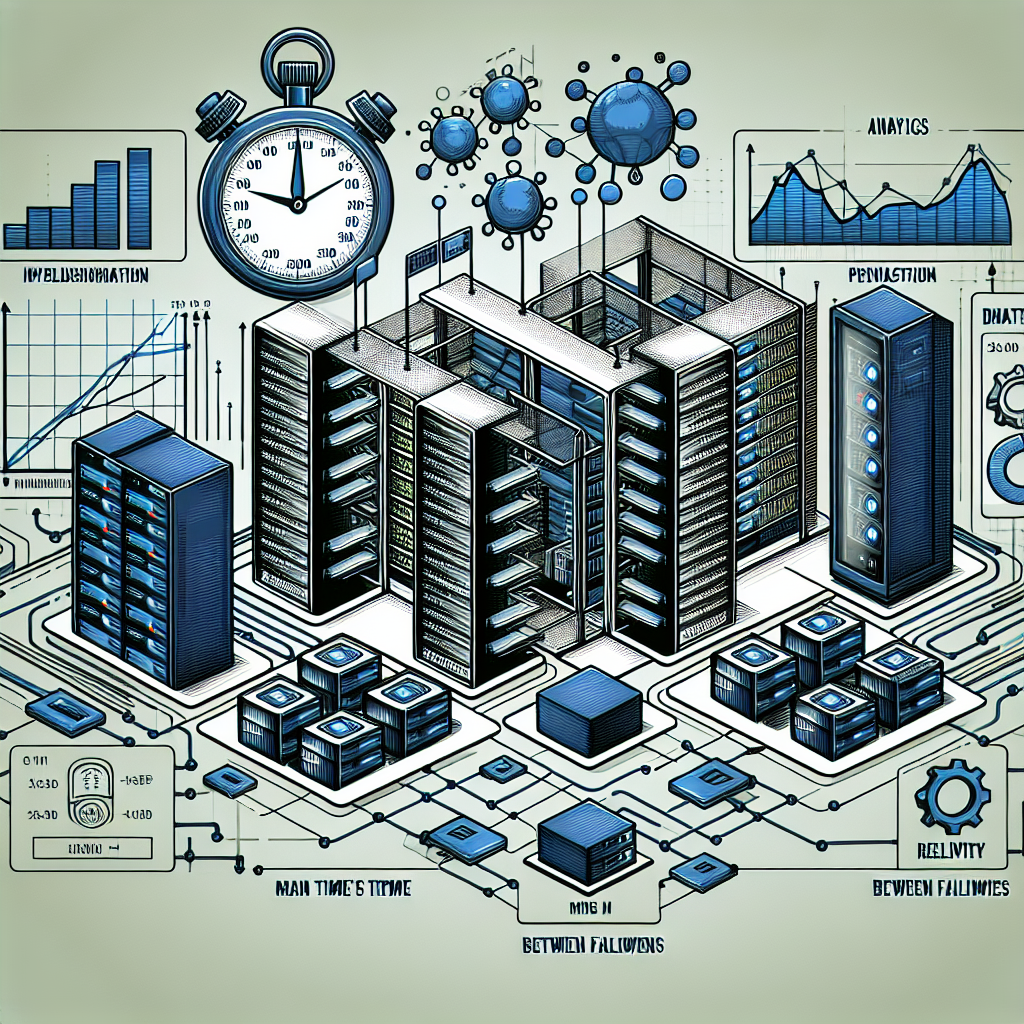
Calculating Data Center MTBF: Key Metrics for Assessing Infrastructure Reliability
When it comes to assessing the reliability of a data center, one of the key metrics that is often used is Mean Time Between Failures (MTBF). MTBF is a measure of how long a system or component is expected to run before experiencing a failure. It is a critical metric for data center operators, as it provides insight into the overall reliability of the infrastructure and can help guide decisions around maintenance, upgrades, and disaster recovery planning.Calculating MTBF for a data center involves analyzing a variety of factors, including the reliability of individual components, the design of the infrastructure, and historical data on failures and downtime. By taking these factors into account, operators can gain a better understanding of the overall reliability of the data center and identify areas where improvements may be needed.
One of the key steps in calculating data center MTBF is to gather data on the reliability of individual components within the infrastructure. This can include servers, storage devices, networking equipment, and power and cooling systems. By collecting data on the failure rates of these components and their expected lifespans, operators can calculate the overall MTBF for the data center.
Another important factor to consider when calculating data center MTBF is the design of the infrastructure. A well-designed data center with redundant systems, backup power supplies, and effective cooling and monitoring systems is likely to have a higher MTBF than a poorly designed facility. By assessing the design of the data center and identifying any potential weaknesses, operators can make informed decisions about where to focus their efforts to improve reliability.
Historical data on failures and downtime is also crucial for calculating data center MTBF. By analyzing past incidents and identifying patterns of failure, operators can gain insights into the reliability of the infrastructure and make predictions about future performance. This data can also be used to identify areas where improvements are needed and guide decisions around maintenance schedules and upgrades.
In conclusion, calculating data center MTBF is a critical task for operators looking to assess the reliability of their infrastructure. By analyzing factors such as the reliability of individual components, the design of the facility, and historical data on failures and downtime, operators can gain valuable insights into the overall reliability of the data center and make informed decisions about how to improve it. By focusing on key metrics such as MTBF, data center operators can ensure that their infrastructure is reliable and resilient in the face of potential failures and disasters.
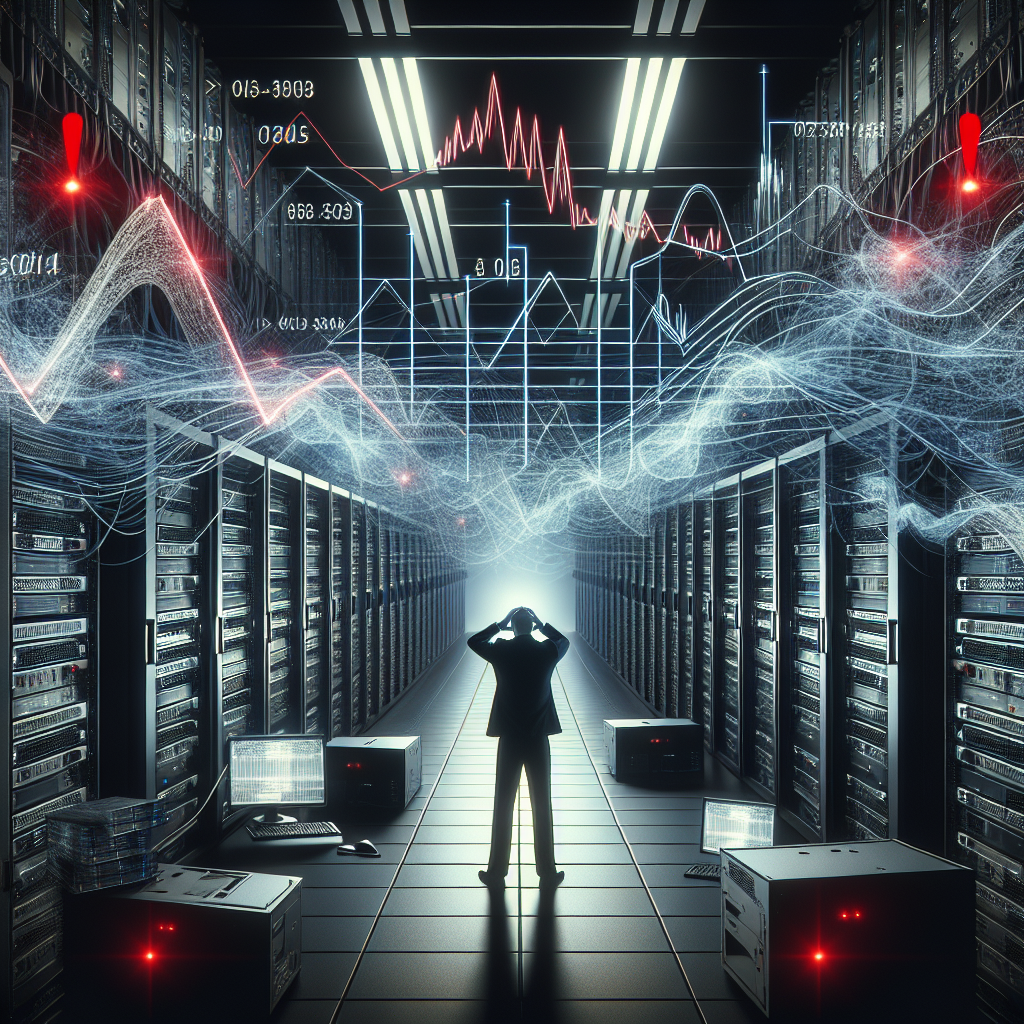
The Cost of Data Center Downtime: How Much Is Your Business Losing?
In today’s digital age, data centers play a crucial role in ensuring the smooth operation of businesses. These facilities house servers, storage devices, networking equipment, and other critical components that enable organizations to store, manage, and process vast amounts of data. However, despite the advancements in technology, data center downtime remains a significant concern for businesses.Data center downtime refers to the period during which a data center is not operational, resulting in the loss of access to critical systems and services. This downtime can be caused by various factors, such as hardware failures, power outages, software glitches, human error, or natural disasters. Regardless of the cause, the impact of data center downtime on businesses can be severe, leading to financial losses, reputational damage, and even legal consequences.
One of the key factors that determine the cost of data center downtime is the size and nature of the business. For small businesses, even a few hours of downtime can have a significant impact on their operations, resulting in lost sales, productivity, and customer trust. On the other hand, large enterprises that rely heavily on data centers for their daily operations may incur millions of dollars in losses for every minute of downtime.
In addition to direct financial losses, data center downtime can also result in intangible costs that are often overlooked. For example, the reputational damage caused by a prolonged outage can lead to customer dissatisfaction, loss of trust, and ultimately, a decline in business performance. Moreover, businesses may also face legal consequences if the downtime results in data breaches, compliance violations, or other regulatory issues.
To mitigate the impact of data center downtime, businesses must invest in robust disaster recovery and business continuity plans. These plans involve regularly backing up data, replicating systems in multiple locations, and implementing failover mechanisms to ensure uninterrupted operation in the event of a downtime incident. Additionally, businesses should conduct regular audits of their data center infrastructure, identify potential points of failure, and implement measures to address them proactively.
Ultimately, the cost of data center downtime is not just a financial concern but also a strategic one. Businesses that fail to address this issue risk losing their competitive edge, customer loyalty, and market reputation. By investing in resilient data center infrastructure and proactive risk management strategies, businesses can minimize the impact of downtime and ensure the continued success of their operations.
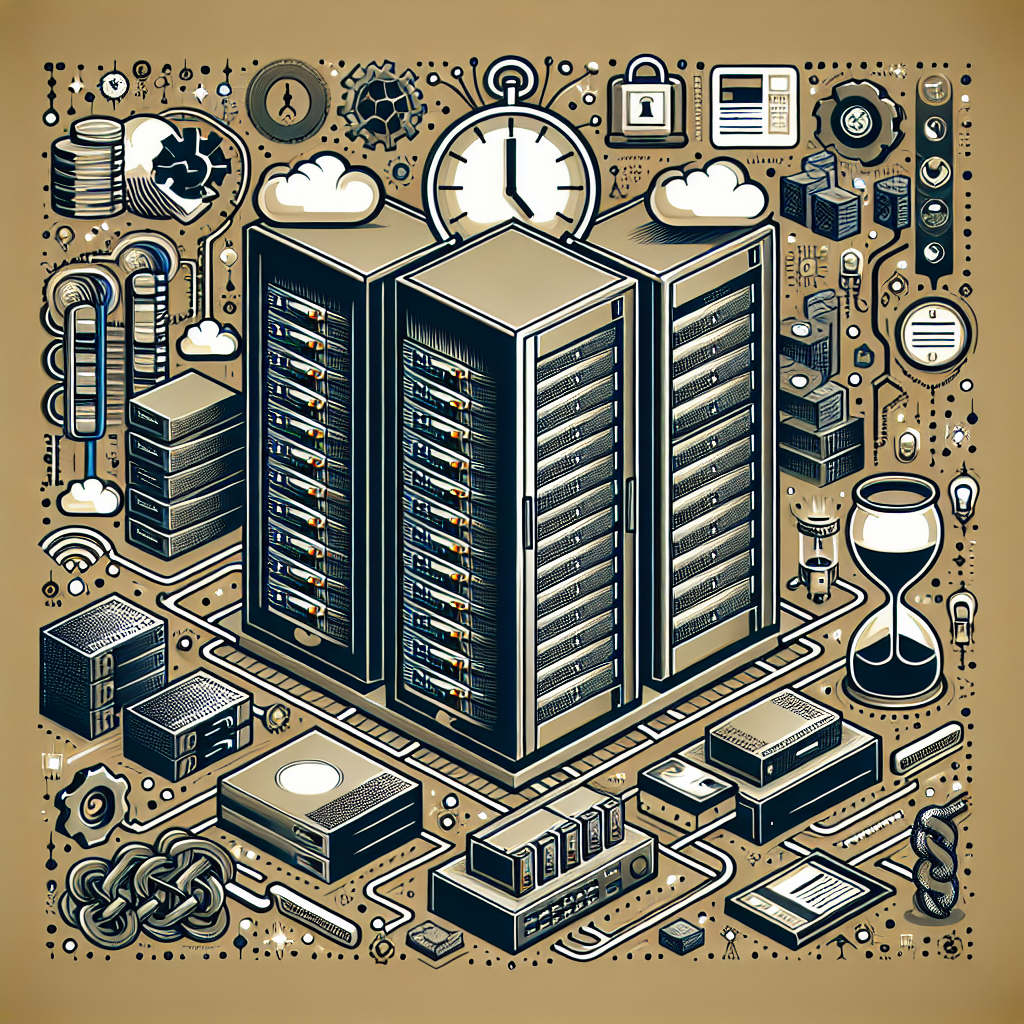
The Importance of Data Center Uptime and How to Achieve High Availability
In today’s digital age, data centers play a crucial role in storing and managing the vast amounts of data generated by businesses and individuals. With the increasing reliance on data for everyday operations, ensuring high availability and uptime of data centers has become paramount.Data center uptime refers to the amount of time a data center is operational and available for use. High availability, on the other hand, refers to the ability of a system to remain operational and accessible at all times, without any downtime. Achieving high availability in data centers is essential for ensuring that critical data and applications are always accessible to users.
There are several key factors that contribute to data center uptime and high availability. One of the most important factors is redundancy. Redundancy involves having backup systems and components in place to ensure that if one component fails, there is another one ready to take over seamlessly. This can include redundant power supplies, network connections, and cooling systems.
Another crucial factor in achieving high availability is regular maintenance and monitoring. Data centers must be regularly maintained to ensure that all systems are functioning properly and to identify any potential issues before they lead to downtime. Monitoring systems can help detect anomalies and alert administrators to potential problems before they escalate.
In addition to redundancy and maintenance, data center design also plays a significant role in achieving high availability. A well-designed data center should have a robust infrastructure with redundant power sources, cooling systems, and network connections. Physical security measures should also be in place to protect against unauthorized access and potential threats.
Implementing disaster recovery and business continuity plans is another essential aspect of ensuring high availability in data centers. These plans outline procedures for recovering data and restoring operations in the event of a disaster or outage. Regular testing of these plans is crucial to ensure that they are effective and can be implemented quickly when needed.
Overall, achieving high availability in data centers requires a comprehensive approach that includes redundancy, maintenance, monitoring, design, and disaster recovery planning. By implementing these strategies, businesses can ensure that their data centers remain operational and accessible at all times, minimizing the risk of downtime and the potential impact on their operations.
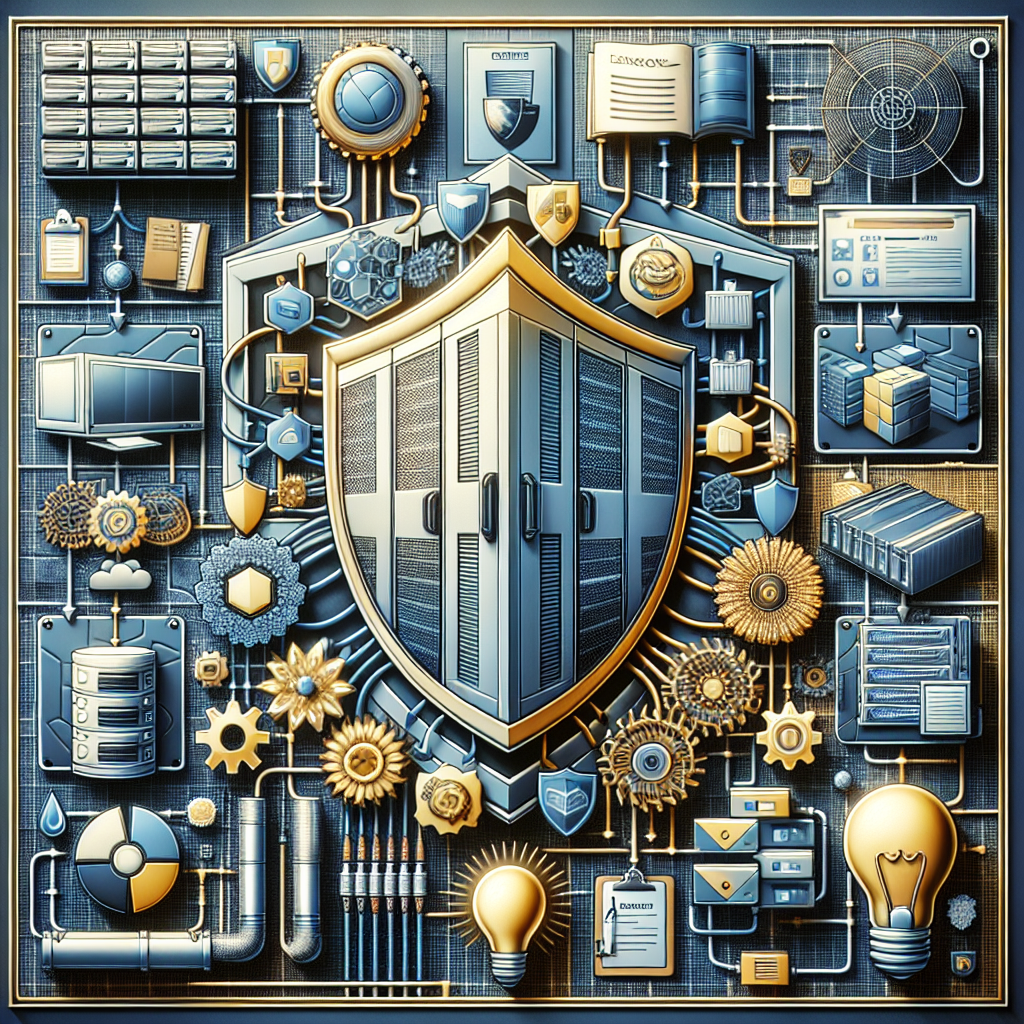
Case Studies in Data Center Resilience: Lessons Learned and Best Practices
In today’s digital age, data centers play a crucial role in the operations of businesses and organizations. These facilities house and manage the vast amounts of data that are essential for daily operations, making data center resilience a top priority for IT professionals. When a data center experiences downtime or failure, it can have serious consequences for the business, including lost revenue, damaged reputation, and potential legal liabilities.One way to ensure data center resilience is to study case studies of past data center failures and successes to learn from them and implement best practices. By analyzing these cases, IT professionals can gain valuable insights into what works and what doesn’t when it comes to data center resilience.
One notable case study is the failure of a major data center in 2016, which resulted in widespread outages for several popular websites and online services. The root cause of the failure was traced back to a simple human error during routine maintenance, highlighting the importance of thorough training and strict protocols for data center staff.
Another case study involves a successful data center migration project that was completed without any downtime or disruptions to operations. The key to this success was meticulous planning, testing, and coordination between all stakeholders involved in the project. By following a detailed roadmap and conducting thorough risk assessments, the organization was able to seamlessly transition to a new data center without any hiccups.
From these case studies, several best practices for data center resilience emerge. These include:
1. Implementing redundancy and failover systems to prevent single points of failure.
2. Regularly testing and updating disaster recovery and business continuity plans.
3. Investing in robust monitoring and alerting systems to quickly identify and address issues.
4. Conducting regular audits and assessments to ensure compliance with industry standards and regulations.
5. Providing ongoing training for data center staff to prevent human errors and improve response times during emergencies.
By incorporating these best practices into their data center operations, organizations can enhance their resilience and minimize the risk of downtime and data loss. Case studies serve as valuable learning tools for IT professionals, providing real-world examples of both the pitfalls and successes of data center resilience efforts.
In conclusion, studying case studies in data center resilience can provide valuable lessons learned and best practices for IT professionals looking to enhance the resilience of their own data centers. By learning from past failures and successes, organizations can better prepare for and mitigate the risks of downtime and data loss, ensuring the continuous operation of their critical business systems.
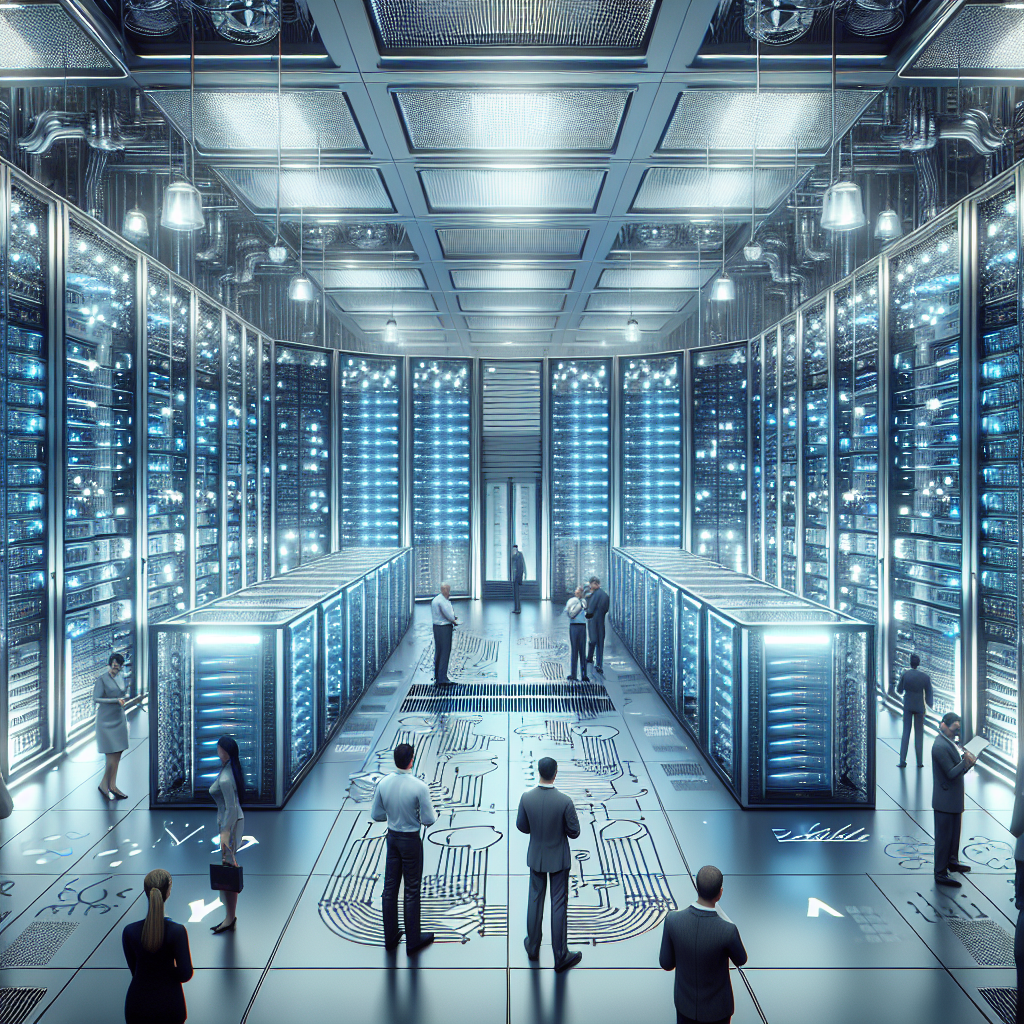
Emerging Trends in Data Center Facilities Management
Data center facilities management is an essential aspect of ensuring the smooth and efficient operation of data centers. With the rapid advancement of technology and increasing demands for data storage and processing, data center facilities management is constantly evolving to keep up with the changing landscape. In this article, we will discuss some of the emerging trends in data center facilities management.One of the key emerging trends in data center facilities management is the use of artificial intelligence (AI) and machine learning. AI and machine learning technologies are being utilized to optimize data center operations, predict equipment failures, and improve energy efficiency. By analyzing large amounts of data in real-time, AI algorithms can identify patterns and anomalies that humans may not be able to detect, allowing for proactive maintenance and quicker resolution of issues.
Another emerging trend in data center facilities management is the adoption of cloud-based management solutions. Cloud-based management platforms offer centralized control and monitoring of data center operations, allowing for remote management and real-time insights into facility performance. This enables data center managers to make informed decisions and adjustments to improve efficiency and reliability.
Green technologies and sustainability are also becoming increasingly important in data center facilities management. With the rising awareness of environmental impact and the need to reduce energy consumption, data centers are implementing energy-efficient practices and renewable energy sources to reduce their carbon footprint. This includes the use of renewable energy sources such as solar and wind power, as well as the implementation of energy-efficient cooling systems and lighting.
Automation and robotics are also playing a significant role in data center facilities management. Automated systems can perform routine tasks such as monitoring equipment performance, adjusting cooling systems, and managing power distribution, freeing up human resources for more strategic tasks. Robotics are also being used for tasks such as equipment maintenance and repairs, increasing efficiency and reducing downtime.
Lastly, data center facilities management is also seeing a shift towards a more holistic approach to security. With the increasing threat of cyber-attacks and data breaches, data centers are implementing comprehensive security measures to protect sensitive data and ensure the integrity of their operations. This includes the use of advanced encryption technologies, biometric access controls, and intrusion detection systems to safeguard data center facilities from unauthorized access.
In conclusion, data center facilities management is witnessing several emerging trends that are shaping the future of data center operations. From the adoption of AI and machine learning to the implementation of green technologies and automation, data center managers are constantly innovating to improve efficiency, reliability, and security. By staying abreast of these emerging trends, data center facilities managers can ensure that their operations remain at the forefront of technology and continue to meet the evolving demands of the digital age.
